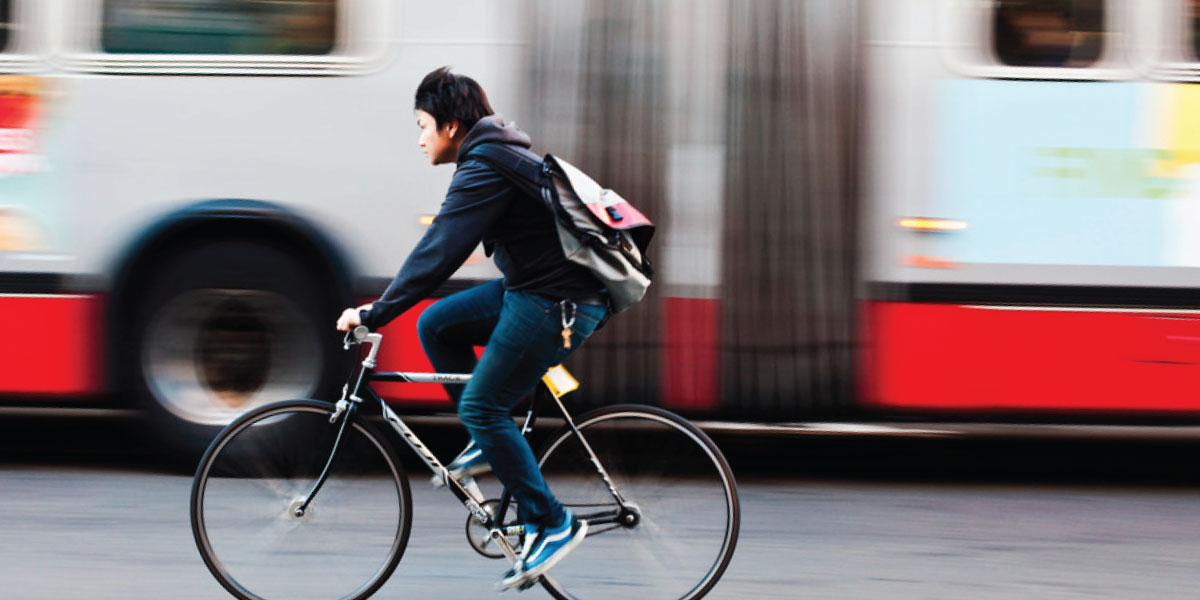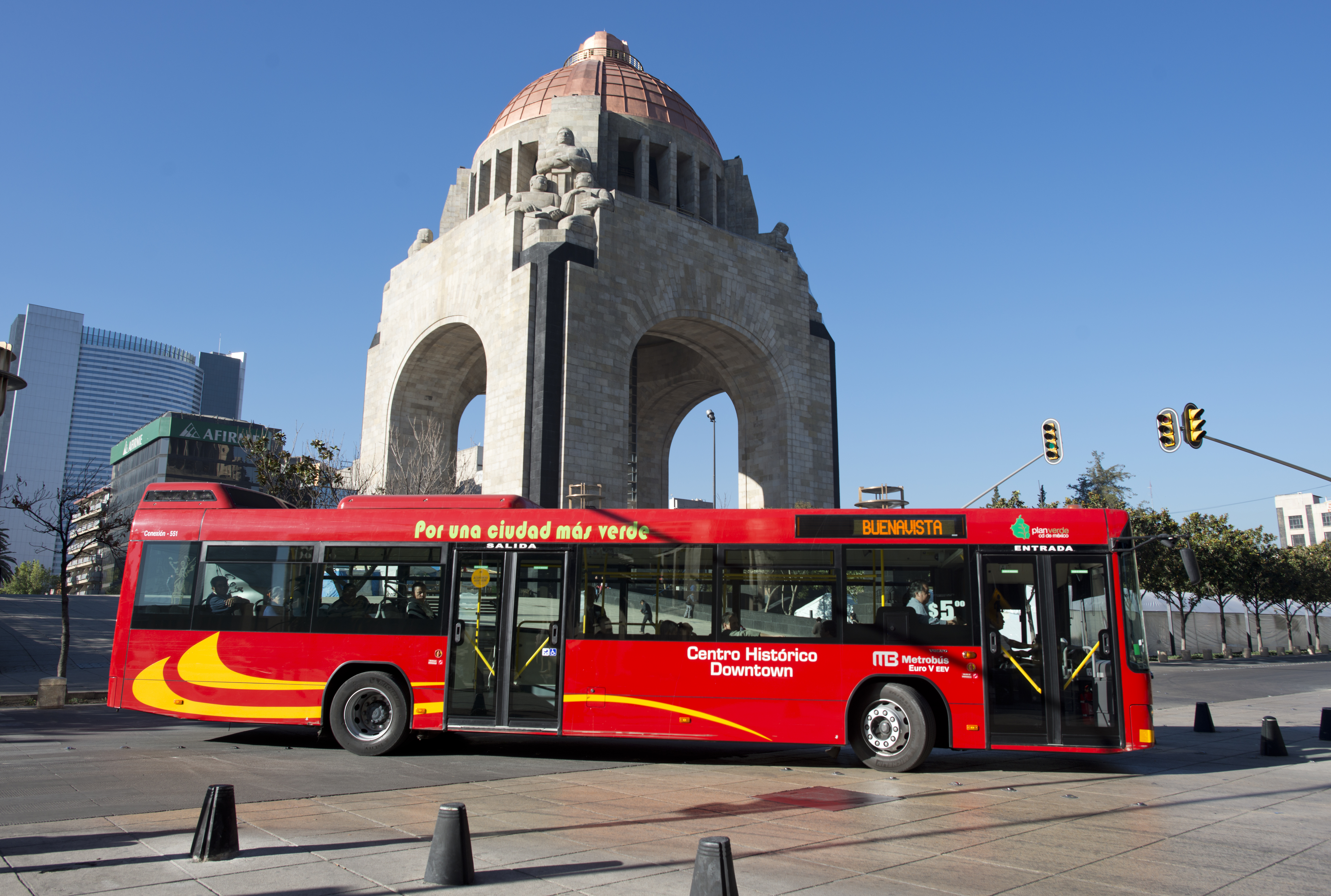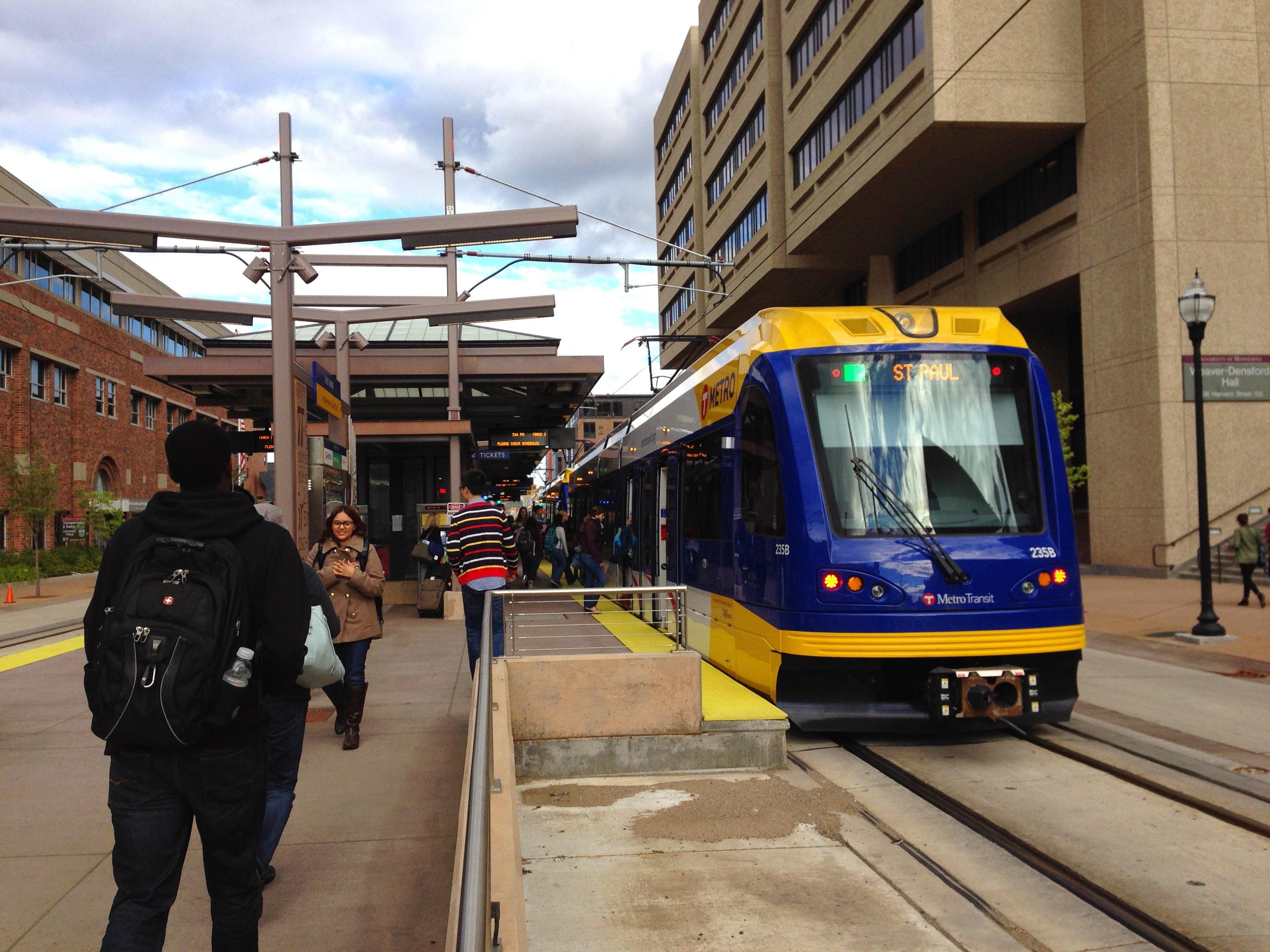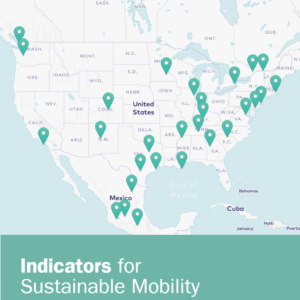
How does your city measure up when it comes to proximity and access to transit?
We developed Indicators for Sustainable Mobility to help answer that question.
Visit Indicators for Sustainable Mobility >
Minneapolis emerges as a middle-tier mass transit role model while seven major US cities provide less than one eighth of their populations with “frequent transit” options.
Many US cities are failing to connect people to jobs through mass transit, according to our new report that uses census and employment data to establish 12 new benchmarks for how mass transit systems serve urban populations. More than one third of the US cities surveyed—all with significant climate change risk—have grown without developing any substantial mass transit systems to serve their populations.
The new report, Indicators for Sustainable Mobility, defines criteria to evaluate mass transportation systems and then uses the criteria to assess 20 cities in the US and compare the scores to those of eight cities in Canada and Mexico.
“We know what happens when cities grow without a solid plan for transport, because we’re seeing it now in some of the fastest-growing cities of both the Global South and southern US,” said Joe Chestnut, author of the ITDP report. “Without alternatives, middle-class wage earners become increasingly dependent on their cars, spending more and more time stuck in traffic, and less wealthy communities simply lose access to the city.”

Compared to major cities in Canada and Mexico, US cities, on average, lag in terms of transit access, speed, comfort and access to destinations. Toronto and Vancouver join Chicago and New York City as the only cities serving more than 85 percent of their populations with frequent transit.
Minneapolis also emerged as one of the best cities for mass transit, with 74 percent of its population, 89 percent of all jobs, and 84 percent of all low-income households all within a 500-meter walk or a 10-minute bike ride of frequent transit. Boston, Chicago, New York City, Philadelphia, Seattle, and Washington, D.C., were the only other US cities serving more than 70 percent of their populations, jobs, and low-income households with frequent transit.
More cities sat at the opposite end of the spectrum, however, with some of the fastest growing metropolitan areas relying almost exclusively on automobile traffic as the sole transportation option. Memphis stood out in this regard, with less than 10 percent of all jobs, 2 percent of all low-income households, and 2 percent of people overall within a 500-meter walk or a 10-minute bike ride of frequent transit. Nashville and San Antonio also served less than one quarter of all jobs, and less than one tenth of all low-income households and people overall served by frequent transit.
The report found many ways in which low-income populations were just as poorly served by transit as other communities, even though their needs are greater. ITDP measured low-income households near rapid transit as the percentage of the population that makes less than $20,000 a year that is located within about a 10-minute bike ride or walk of a rapid transit station. The report found that, although there is not a major difference in terms of proximity to transit, there is a lack of access to jobs that don’t require a high school education with a 30- or 60-minute commute, putting them out of reach of the people who most need them.
“In the US, there is a narrative that if people work hard, then they can get out of poverty, but we’ve built cities that make this narrative impossible,” said Chestnut. “For households making less than $20,000 per year, reliable cars are a pipe dream: a huge expense that they can’t afford. Without adequate transit, they will remain stuck in place.”
Benchmarking Success in Mass Transportation
The ITDP report found that the high-performing cities all focused on keeping mass transit frequent, rapid and accessible:
- Frequent—A bus or train every 12 minutes or less from 7 a.m. to 9 p.m. Increasing transit frequency is the single most important thing cities can do to increase transit ridership. It may not be sufficient alone, but it is the single most important predictor of transit use.
- Rapid—Slow-moving buses stuck in traffic are not an appealing option. In addition to frequency, transit needs to have priority on streets—a dedicated tram or busway, off-board fare collection and all-door boarding are some of the features that make transit rapid.
- Access to Destinations—You can’t take transit if it doesn’t go where you need to go. At a minimum, it needs to take you between home and work, but should also offer options for mobility overall—changing jobs, moving houses, taking children to school, shopping, health care. This is measured by a host of indicators: everything from people’s daily access to transport, to jobs located near transit, to cycling infrastructure, to city characteristics such as block density, which makes for a more walkable environment.

Photo Credit: LADOT Bike Blog
ITDP’s analysis revealed that good biking infrastructure improves access to frequent transit. Protected bike lanes are an inexpensive way for cities to increase the number of people using frequent transit lines, often solving the “first-last mile” problem. On average, bike lanes increased access to frequent transit by 2.5 percent or about 21,000 people per city.
The researchers also found that the more access people have to transit and jobs, the more they tend to use transit. Those cities with higher transit mode share also tended to have high-capacity transit corridors, such as major arteries that cut through the city center, with dedicated lanes for buses, as well as metro or light rail. Lower transit mode share would include islands of coverage, such as a park-and-ride cluster in certain areas, requiring most people to drive at least part of the trip.
Interestingly, Los Angeles—famous for its gridlock and smog—placed in the middle of the pack, serving 45 percent of its population, 59 percent of jobs, and 57 percent of low-income households with frequent transit.
“Climate change is forcing a rethink of urban development principles across the US, and provide more transport options. Cities are doing that are seeing some really positive results, while cities that cling to the “cars only” model are falling behind,” added ITDP’s Chestnut. “In creating universal benchmarks, we can see how cities like Los Angeles, Seattle, and Minneapolis have made tremendous strides in improving access without cars. These cities are healthier and more equitable places to live because of these improvements.”
Minneapolis Stands Out

While the overall picture of transport access is dim, the city of Minneapolis stood out as a role model. Although a much smaller city, Minneapolis is close to Washington, DC, in terms of transit ridership percentage and Frequent Transit, and rivals Boston and Philadelphia in terms of block density, a key indicator of a quality walking environment.
Minneapolis’ success is partly due to smart policies around an ambitious plan for transit-oriented development, Minneapolis 2040. This includes investing in a quality bike network, a system of off-street trails that the city is building on to create 35 miles of protected bikeways. Minneapolis significantly increased access to cycling and transit, growing the percentage of people living near frequent transit (PNFT) from 64 percent to 73 percent. This was the largest increase among all the cities that ITDP evaluated, and the city’s scores were comparable to larger coastal cities like Boston and Seattle. In contrast, Dallas––a much larger city with a limited frequent transit network––serves only 41 percent of all jobs, 14 percent of all low-income households, and 11 percent of all people overall within a 500-meter walk or a 10-minute bike ride of frequent transit.
“Minneapolis has very intentionally tied transportation and land use decisions together in policy, focusing growth near transit and prioritizing infrastructure improvements in growing parts of the city,” says Lisa Bender, president of the Minneapolis City Council. “We have made very specific commitments to using public transportation investments to advance city goals supporting race equity and fighting climate change.”

